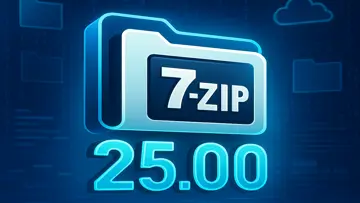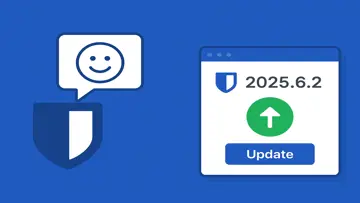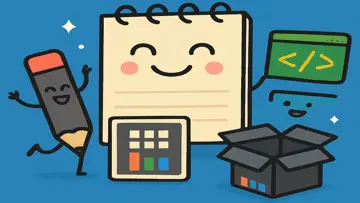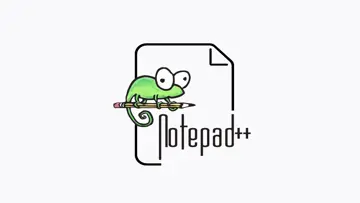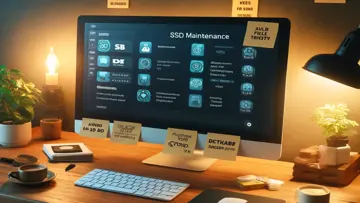Godot: The Open-Source Game Engine Revolutionizing Indie Development
Godot stands out as a powerful, user-friendly game engine that empowers developers to create 2D and 3D games with its versatile features and strong community support.
Godot: An In-Depth Review of the Open Source Game Engine
Godot is an open-source game engine developed by a community of dedicated contributors under the stewardship of the Godot Engine project. Released initially in 2014, it has since gained significant traction among indie developers and studios for its versatility and user-friendly features. Godot provides users with a multitude of functionalities, making game development accessible to both beginners and experienced developers. Below, we delve into some of the key features and capabilities of Godot that underline its growing popularity.
Multi-platform Capabilities
One of the standout features of Godot is its ability to export games across multiple platforms with minimal effort. Developers can create games for:
- Windows
- macOS
- Linux
- iOS
- Android
- HTML5/WebAssembly
- Various consoles (PlayStation, Xbox, Nintendo Switch)
With a single codebase, developers can deploy their games universally, saving time and reducing resource expenditure typically associated with multi-platform development.
User-Friendly Interface
The Godot engine features an intuitive layout that makes navigation straightforward for users. Its editor is designed with usability in mind:
- A layout customizable to fit individual developer preferences.
- A scene system that allows developers to visualize their game structure easily.
- A built-in script editor with syntax highlighting and debugging capabilities.
This user-friendly design lowers entry barriers for newcomers while offering advanced features that experienced developers can leverage in building complex projects.
Script Language Flexibility
Godot offers a unique scripting language known as GDScript, specifically designed for game development. Its syntax resembles Python, making it easy to learn for those already familiar with programming. Additionally, Godot supports multiple other languages, which include:
- C# - popular among developers already versed in the .NET framework.
- C++ - for more performance-sensitive needs.
- VisualScript - a node-based programming language for those preferring a visual approach.
This flexibility allows developers to choose the programming style that best suits their preferences and skill levels.
Rich Asset Pipeline
The asset pipeline in Godot supports a wide array of file formats, making it easy to import textures, audio files, animations, and other game assets. Additionally, Godot includes:
- A built-in animation editor to create rich animations directly within the engine.
- A versatile audio system supporting sound effects and music playback.
- Drag-and-drop asset imports that streamline the workflow.
This rich asset pipeline facilitates seamless integration of various media types into projects, enhancing productivity during development.
Scene System and Nodes
At the heart of Godot’s architecture lies its scene system, which embraces a node-based approach. Each element within a game exists as a node that can be combined into scenes. The benefits of this system include:
- Reusable scenes: Developers can create reusable components that improve efficiency.
- An organized structure: Complex games can be structured into smaller segments for better management.
- Parent-child dynamics: Nodes can act as parents or children, allowing for intricate relationship setups among different elements in a game.
Comprehensive Documentation and Community Support
The Godot project prides itself on an extensive documentation portal that covers every aspect of the engine. New users can quickly find tutorials and guides catering to various levels of expertise. Furthermore:
- A robust community on platforms such as Reddit, Discord, and GitHub ensures developers can seek help when they encounter challenges or need advice on best practices.
- The community frequently contributes plugins and tools that enhance the capabilities of the engine further.
Performance Optimization Options
Godot emphasizes optimization at every stage of development without compromising quality. Key performance-related features include:
- Custom shaders: Allowing developers to tailor graphics rendering for improved aesthetic quality.
- Baked lighting: Optimizing lighting effects that enhance visual fidelity while minimizing performance costs.
- Scripting optimization tools: Includes built-in profiling tools to help identify bottlenecks in performance smoothly.
Game Templates and Examples
The engine includes various templates and sample projects as part of its initial installation. This feature is especially beneficial for newcomers who may want to learn how different game mechanics are constructed. Templates cover genres such as:
- 2D platformers
- Puzzle games
- Narrative adventures
- Your custom projects using variations of existing templates
Conclusion: Why Choose Godot?
The combination of versatility, extensive support resources, robust performance optimization tools, and a welcoming community cements Godot's position as a viable option for game development across all skill levels. Whether developing a simple mobile game or an elaborate desktop title, Godot provides the necessary tools without the overhead costs associated with many proprietary engines. As it continues to evolve rapidly due to continual updates and community involvement, it's clear that Godot is more than just an alternative—it's a serious contender in the game engine ecosystem.
Overview
Godot is a Freeware software in the category Development developed by micro.
The latest version of Godot is 4.4.1, released on 03/27/2025. It was initially added to our database on 10/16/2009.
Godot runs on the following operating systems: Windows.
Godot has not been rated by our users yet.
Pros
- Open-source and free to use without any licensing fees.
- Cross-platform support allows deployment on various operating systems.
- User-friendly interface that is suitable for both beginners and experienced developers.
- Rich documentation and active community support for troubleshooting and learning.
- Supports both 2D and 3D game development, offering flexibility for different projects.
- Built-in scripting languages (GDScript, VisualScript, C#) make coding accessible.
- Lightweight and efficient, can run well on low-spec machines.
- Customizable editor with options for creating custom tools and plugins.
Cons
- Limited advanced 3D features compared to more established engines like Unity or Unreal Engine.
- Some users may find GDScript less intuitive if they are coming from other programming languages.
- The engine's asset store is not as extensive as those of competitors, leading to fewer ready-made resources available.
- Learning curve for more complex functionalities, especially in 3D game development.
- Updates can sometimes introduce breaking changes that require adjustments in existing projects.
FAQ
What is Godot by micro?
Godot by micro is a lightweight and fast event-driven microservices framework for Ruby.
What language is Godot by micro written in?
Godot by micro is written in Ruby.
Is Godot by micro suitable for building microservices?
Yes, Godot by micro is specifically designed for building microservices due to its event-driven architecture.
Does Godot by micro support asynchronous programming?
Yes, Godot by micro supports asynchronous programming, making it efficient for handling multiple tasks concurrently.
Can I use Godot by micro for building real-time applications?
Yes, Godot by micro can be used for building real-time applications that require fast communication between components.
Does Godot by micro provide built-in scalability features?
Godot by micro does not provide built-in scalability features but can be integrated with other tools for scaling applications.
Is Godot by micro open source?
Yes, Godot by micro is an open-source framework released under the MIT license.
What are some key features of Godot by micro?
Some key features of Godot by micro include lightweight design, event-driven architecture, support for asynchronous programming, and ease of use.
How can I get started with Godot by micro?
You can get started with Godot by micro by installing it using RubyGems and following the documentation available on the project's GitHub repository.
Is there a community around Godot by micro?
Yes, there is a growing community around Godot by micro that provides support, contributions, and resources for developers using the framework.

Pete Milner
I'm Pete, a software reviewer at UpdateStar with a passion for the ever-evolving world of technology. My background in engineering gives me a unique insight into the intricacies of software, allowing me to provide in-depth, knowledgeable reviews and analyses. Whether it's the newest software releases, tech innovations, or the latest trends, I'm here to break it all down for you. I work from UpdateStar’s Berlin main office.
Latest Reviews by Pete Milner
Latest Reviews
|
|
PDFSigner
PDFSigner: Seamlessly Secure Your Documents |
|
|
PhotoMirage
Bring your photos to life with PhotoMirage by Corel Corporation. |
|
|
GPU Tweak III
Experience Maximum Performance with GPU Tweak III by Asus! |
|
|
IPTVSmartersPro
IPTVSmartersPro: A Premium IPTV Viewing Experience |
|
|
Legacy Games Launcher
Legacy Games Launcher offers a seamless gaming experience for classic game enthusiasts |
|
|
Norton Antivirus 2005
Norton Antivirus 2005: Protect Your Computer with Peace of Mind |
|
|
UpdateStar Premium Edition
Keeping Your Software Updated Has Never Been Easier with UpdateStar Premium Edition! |
|
|
Microsoft Edge
A New Standard in Web Browsing |
|
|
Microsoft Visual C++ 2015 Redistributable Package
Boost your system performance with Microsoft Visual C++ 2015 Redistributable Package! |
|
|
Google Chrome
Fast and Versatile Web Browser |
|
|
Microsoft Visual C++ 2010 Redistributable
Essential Component for Running Visual C++ Applications |
|
|
Microsoft Update Health Tools
Microsoft Update Health Tools: Ensure Your System is Always Up-to-Date! |

